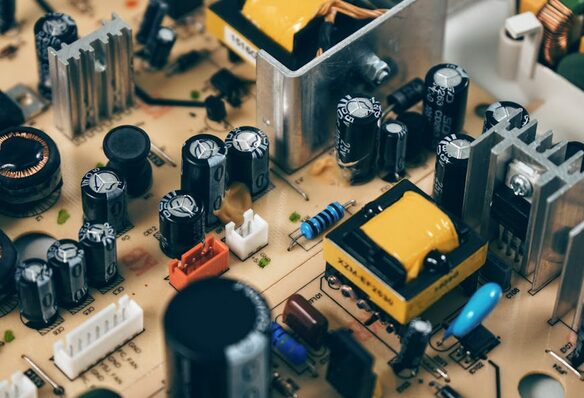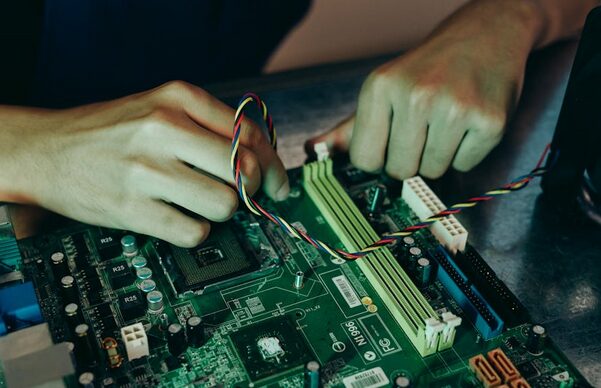It is well known that PCB design always has a series of principles to follow. If these principles are not adhered to, it may lower the success probability of PCB design, affect product performance, and even have negative impacts on signal integrity, electromagnetic radiation control, and system reliability. Today, this article will analyze these principles, hoping to help everyone.

Principle 1: High-Frequency Signals Require Multi-Layer Board Design
Necessity: High-frequency signals (>5MHz or rise time <5ns) are prone to signal reflection, crosstalk, and radiation issues on single or double-sided boards.
Reason: Multi-layer boards effectively control signal loop area through close coupling of inter-layer signals with reference planes, reducing signal radiation and interference.
Principle 2: Key Routing Layers Close to Ground Plane
Necessity: Key signal lines (such as clocks, buses, etc.) need good electromagnetic shielding.
Reason: Being close to the ground plane reduces signal loop area, lowers radiation, and improves signal integrity and anti-interference capability.
Principle 3: Key Signal Lines on Single-Sided Boards Should Be Grounded
Necessity: Single-sided boards struggle to control signal loops through inter-layer coupling.
Reason: Grounding on both sides reduces loop area, prevents crosstalk, and improves signal quality.
Principle 4: Key Signal Line Processing on Double-Sided Boards
Necessity: Double-sided boards also need to optimize key signal paths.
Reason: Grounding or perforating the projection plane simulates multi-layer board effects, reducing radiation and interference.
Principle 5: Power Plane Shrinkage
Necessity: Reduce edge radiation from power planes.
Reason: Shrinkage design effectively suppresses edge effects, improving electromagnetic compatibility.
Principle 6: Routing Layers Within Return Plane Areas
Necessity: Ensure signal loop integrity and avoid edge radiation.
Reason: Routing in non-projection areas increases signal loop area and radiation.
Principle 7: High-Frequency Signal Routing Layer Selection
Necessity: High-frequency signals should traverse internal layers to reduce radiation.
Reason: High-frequency signals transmitted between two layers can minimize spatial radiation, protecting signal quality.
Principle 8: High-Frequency Single-Sided Board TOP/BOTTOM Layer Grounding
Necessity: Suppress high-frequency signal radiation into space.
Reason: Ground copper foil on TOP/BOTTOM layers forms a shielding layer, reducing signal leakage.
Principle 9: Main Power Plane Adjacent to Ground Plane
Necessity: Optimize power circuit loops.
Reason: Close design reduces power loop area, improves power efficiency, and reduces noise.
Principle 10: Power Routing on Single-Sided Boards Should Be Close to Ground Lines
Necessity: Ensure minimal power loop area.
Reason: Parallel routing reduces current loop area, lowering electromagnetic radiation and noise.

Principle 11: Power Routing on Double-Sided Boards Must Be Parallel to Ground Lines
Necessity: Ensure minimal power current loop area.
Reason: Parallel routing reduces current loop area, lowering electromagnetic radiation and noise.
Principle 12: Optimizing Spacing Between Routing Layers
Necessity: Reduce signal crosstalk between adjacent routing layers.
Reason: Increasing spacing between routing layers while minimizing spacing between routing layers and return signal layers suppresses coupling interference between parallel signal routes.
Principle 13: Avoid Overlapping Projection of Plane Layers
Necessity: Prevent inter-layer noise coupling.
Reason: Overlapping projections increase coupling capacitance, leading to inter-layer noise transmission and affecting signal quality.
Principle 14: Linear Layout of Signal Flow Directions
Necessity: Optimize signal paths and reduce coupling interference.
Reason: Linear layout reduces complexity of signal paths, avoiding direct coupling of signals, enhancing signal integrity.
Principle 15: Modular Circuit Partition Layout
Necessity: Isolate interference between different circuit types.
Reason: Partition layout effectively isolates digital, analog, high-speed, and low-speed circuits, reducing mutual interference.
Principle 16: High and Medium-Speed Circuits Away from Interfaces
Necessity: Prevent high-frequency noise radiation.
Reason: Layout away from interfaces reduces the radiation impact of high-frequency circuits on external signals, protecting interface signal quality.
Principle 17: Large Current Units Adjacent to Energy Storage Filter Capacitors
Necessity: Optimize large current loops.
Reason: Energy storage capacitors reduce large current loop area, lowering electromagnetic radiation and improving power stability.
Principle 18: Power Input Filtering Near Interfaces
Necessity: Maintain filtering effectiveness.
Reason: Placing filter circuits close to interfaces avoids coupling interference after filtering.
Principle 19: Interface Circuit Protection Filtering Nearby
Necessity: Enhance interface protection effectiveness.
Reason: Protection, filtering, and isolation devices placed close to interfaces ensure timely and effective protection, reducing signal attenuation and noise interference.
Principle 20: Interface Protection Before Filtering
Necessity: Protect filtering circuits.
Reason: Protection before filtering ensures that protective circuits first suppress external over-voltage and over-current, protecting subsequent filtering circuits from damage.

Principle 21: Avoid Coupling Between Input and Output Lines of Filtering and Isolation Circuits
Necessity: Ensure filtering, isolation, and protection effectiveness.
Reason: Coupling between input and output lines weakens the effectiveness of filtering, isolation, and protection circuits, impacting overall circuit performance.
Principle 22: Filtering Isolation Devices Placed in “Clean Ground” Isolation Zone
Necessity: Optimize “clean ground” effectiveness.
Reason: Placing in isolation zones prevents filtering and isolation devices from coupling through plane layers, maintaining the purity and effectiveness of the “clean ground”.
Principle 23: Specificity of “Clean Ground”
Necessity: Ensure minimal interface radiation.
Reason: “Clean ground” is specifically designed to reduce interface radiation; any unrelated circuits and devices may introduce interference, affecting the design intent.
Principle 24: Strong Radiation Devices Principle Interface Connector
Necessity: Prevent radiation interference.
Reason: Strong radiation devices should maintain a principle interface connector of at least 1000mil, reducing direct radiation and cable coupling currents, lowering external radiation.
Principle 25: Sensitive Circuit Principle Edges
Necessity: Improve system stability.
Reason: Edges, especially near interfaces, are susceptible to external interference; sensitive circuit principles should maintain at least 1000mil to avoid operational risks.
Principle 26: IC Filter Capacitors Placed Close to Chip Pins
Necessity: Optimize high-frequency loop area.
Reason: Capacitors placed close to pins reduce high-frequency loops, lowering radiation and enhancing filtering effectiveness.
Principle 27: Starting End Matching Resistors Close to Output Ends
Necessity: Achieve impedance matching.
Reason: Matching resistors placed at output ends ensure that the chip output impedance plus the resistor impedance equals the characteristic impedance of the routing, satisfying matching conditions.
Principle 28: Avoid Right Angles and Sharp Corners in Routing
Necessity: Maintain impedance continuity and reduce EMI radiation.
Reason: Right-angle routing causes impedance discontinuities, leading to signal reflections and increased EMI radiation, affecting signal quality.
Principle 29: Optimizing Routing Layer Layout
Necessity: Reduce crosstalk.
Reason: Avoid long parallel routing of adjacent layers or adopt vertical layouts to lower inter-layer signal crosstalk.
Principle 30: Key Signals Routed on Inner Layers
Necessity: Provide shielding protection.
Reason: Inner layer routing provides shielding for key signals like clocks, reducing external interference and enhancing signal integrity and stability.
This article is an original work from Wan Yi Education, please indicate the source when reprinting!